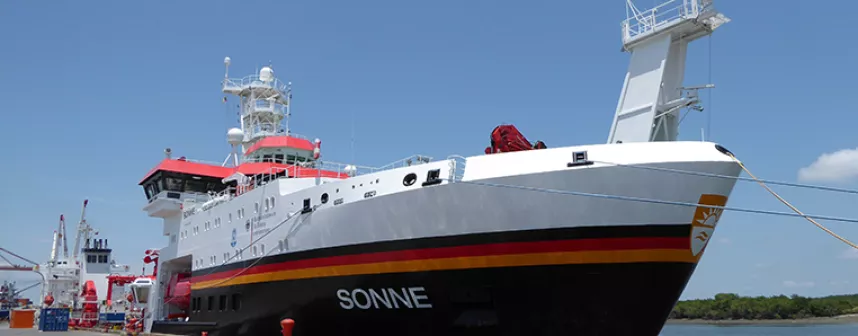Research project on environmental impacts of deep-sea mining
November 27, 2018
Mineral raw materials are in great demand, which is why previously unused deposits are also coming into focus. Economically interesting quantities of nickel, cobalt, copper and other precious metals are contained in manganese nodules that have formed on the seabed over millions of years. An international project funded by the Federal Ministry of Education and Research (BMBF) and involving scientists from Jacobs University Bremen is investigating the environmental effects and risks of a possible mining of these nodules in the deep-sea, 4000 meters below sea level.
The deep-sea is a vast, still little studied area where ecological processes are slow due to low temperatures, darkness, and limited food supply. The ecosystem, therefore, needs centuries to recover from disturbances. Many species have not yet been discovered, and some of the processes that take place in the deep-sea and may have far-reaching effects are not yet fully understood. The chemical balance between the seabed and the water column will also be disturbed by technical intervention.
At the beginning of February 2019, the international team will board the German research vessel "Sonne" in Manzanillo, Mexico. The group of scientists from 32 partner institutions from Germany, the Netherlands, Belgium, Portugal, Italy, Norway, France, Great Britain, Poland, and Jamaica is aiming for the Clarion Clipperton Zone, four days away from the Mexican coast. In this area in the Central Pacific, the researchers will observe and study an industrial deep-sea mining experiment by the Belgian company DEME-GSR.
The mining of manganese nodules from the seabed influences the surface sediment and whirls up soft deep-sea sediments, creating a plume that spreads over long distances before returning to the seabed. The scientists will examine these sediment plumes in real time and take samples from the affected area immediately after the intervention. The researchers will spend a total of three months in the region.
Jacobs University's team, including postdoc Sophie Paul, will focus on metal distribution in the sediment and pore water of the sediment. Its composition allows conclusions to be drawn about the nature and extent of the changes and the effects on biogeochemical cycles. Sediment cores will be sampled in the ship's cold room to preserve the temperature conditions from the deep-sea as best as possible and will be analyzed in the laboratory at Jacobs University after the voyage. The oceanographer Prof. Dr. Laurenz Thomsen from Jacobs University and the postdoc Benjamin Gillard are also involved in the project.
, Postdoc Sophie Paul. Photo: privateOn the part of Jacobs University, this research project is headed by Prof. Dr. Andrea Koschinsky, as was the case with the previous project. From 2015 to 2017, European researchers, including the geochemist's working group, analyzed possible environmental aspects that might arise from future industrial mining activities on the deep-sea floor. Sophie Paul was also involved as a PhD student at the time. Apart from the BMBF, "Mining Impact 2", as the project is called, is financed by the national funding agencies of the other participating countries. The BMBF itself is supporting the project with 442,000 euros for Jacobs University.
Questions will be answered by:
Prof. Dr. Andrea Koschinsky | Professor of Geosciences
a.koschinsky [at] jacobs-university.de | Tel: +49 421 200-3567
Further information:
https://miningimpact.geomar.de
